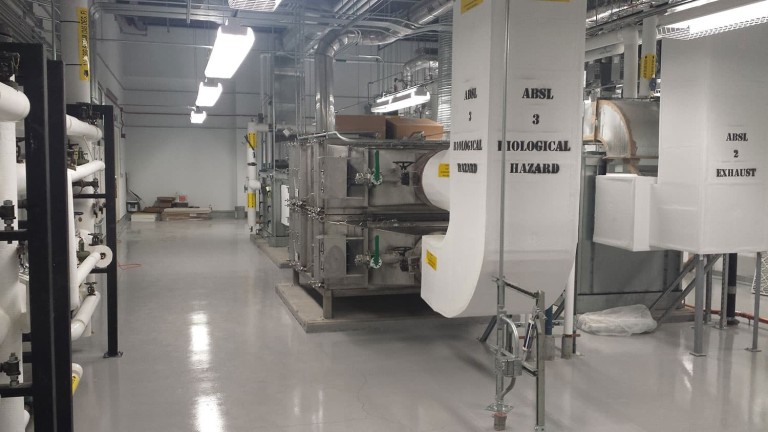
When you own and operate a Biosafety Level 3 facility, it’s crucial that all facility systems and equipment perform their functions as you intend.
For example, it’s of utmost importance that the following are in proper working order in your BSL-3 lab:
- Biosafety cabinets
- Building Control System
- Airflow and ventilation systems
- Airflow direction control
- HEPA filters
- Doors
- Safety features, including an eyewash station and hands-free sink
Having correctly performing facility and lab equipment is critical to the scientific work, the health of the environment and the safety of your laboratory employees and others, including animals if you maintain an Animal Biosafety Level 3 facility.
What Is a BSL-3 Facility?
New customers often ask us, “What is a BSL-3 lab?” in terms of its importance to their enterprise. A BSL-3 facility or lab is designed to support public healthcare by allowing researchers to discover and identify dangerous diseases and learn how to address them to support human health and safety. Work done at the BSL-3 level applies to research, teaching, diagnosis, production work and clinical efforts to counter lethal airborne disease exposure. Because of the pathogenic nature of these agents, you must perform work in biocontainment facilities according to government regulations, following industry best practices for engineering controls.
Ownership of a BSL-3 facility involves compliance with commissioning requirements. Accordingly, the performance of your lab is connected to adhering to the mandates of various regulatory bodies setting standards and guidelines for the industry.
Be aware that BSL-3 biosafety requirements establish that you conduct all biohazardous work within biosafety cabinets, while maintaining directional airflow from outside to inside. Entry and exit for the BSL-3 suite must be through two interlocking self-closing doors. Because you are working with toxins and microbes whose infections are life-threatening, biosafety requirements also call for you to provide medical surveillance of all lab workers.
How to Improve BSL-3 Laboratory Performance
When you’ve determined that your BSL-3 laboratory requires improvements, the implication is that your facility, equipment, or lab personnel are not performing to meet biosafety or lab operational requirements.
With performance verification testing, we assist your organization to identify areas that need improvement to verify that you are meeting expected performance levels.
Over the years, we’ve found that these methods can boost performance in BSL-3 labs:
- Take steps to improve how airflow is controlled and distributed to contain contaminants. Proper ventilation is critical to the function high-containment labs.
- Devise a verification protocol covering testing and performance verification for your specific facility. The BSL-3 testing protocol must ensure you are complying with guidelines and regulations from the ANSI, CDC, NIH and USDA.
- Maintain rigorous documentation written from an informed, expert vantage point of your testing and checkup protocols, how you maintain and operate lab facility systems and equipment and above all, your biosafety protocols that keep the laboratory operating safely and reliably.
- Review and update the details of your emergency contingency plans so you can address any control failures that may occur while adhering to your biosafety containment requirements.
- Offer training for your workers when you adjust policies, change procedures, or switch out equipment, so everyone is on the same page.
- Schedule time on the calendar to review BSL-3 protocol checklists to update processes to make them relevant to current lab operation.
Contact the Experts at Technical Safety Services for All Your BSL-3 Services Today
Cornerstone Commissioning, a part of Technical Safety Services, has an excellent reputation in the industry for the wide array of services provided for BSL-3 labs, including facility performance verification.
Of particular interest to our customers are services involving the annual performance verification plans we create to verify an organization’s ongoing compliance with guidelines and facility performance verification best industry practices. To learn more about our approach to BSL-3 facilities, contact the professionals at Technical Safety Services today.

